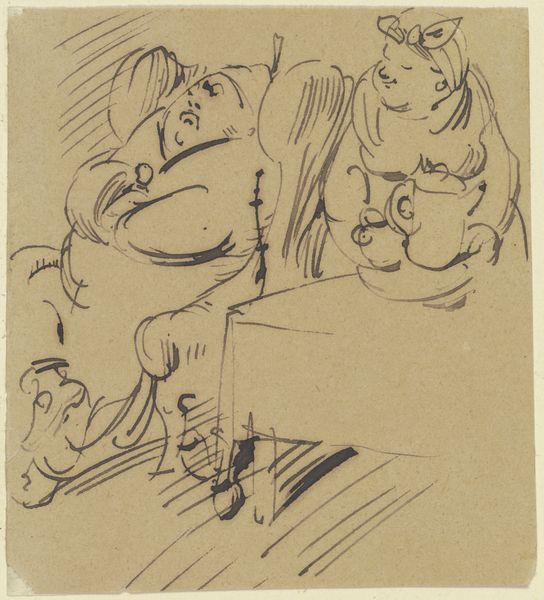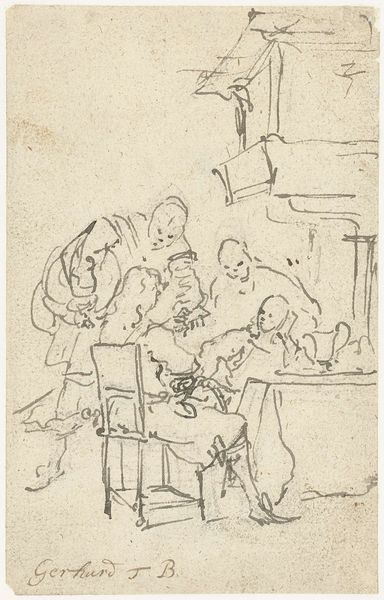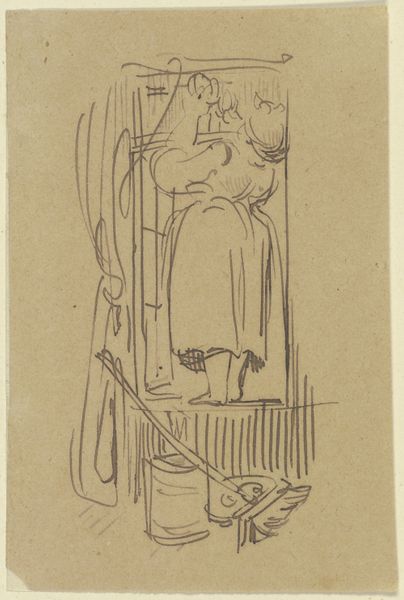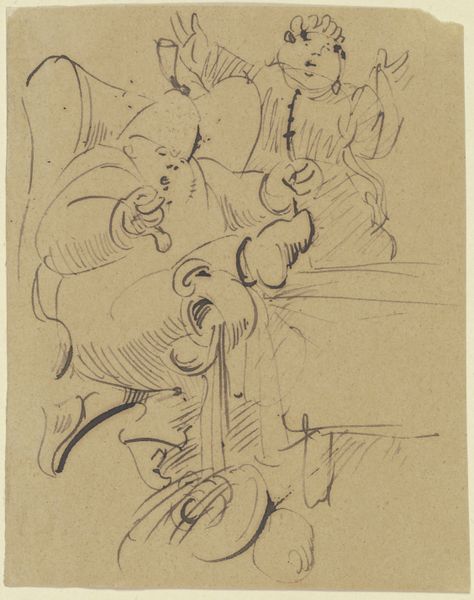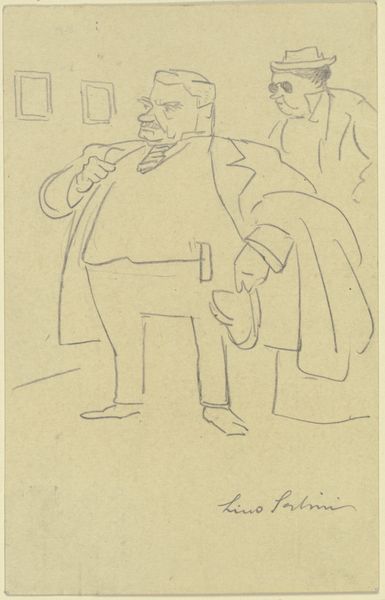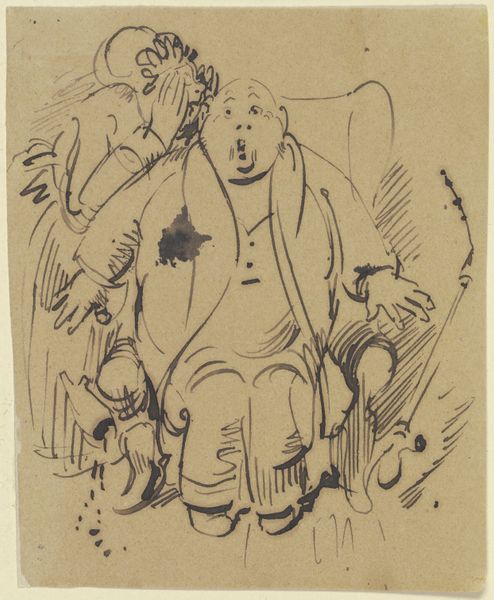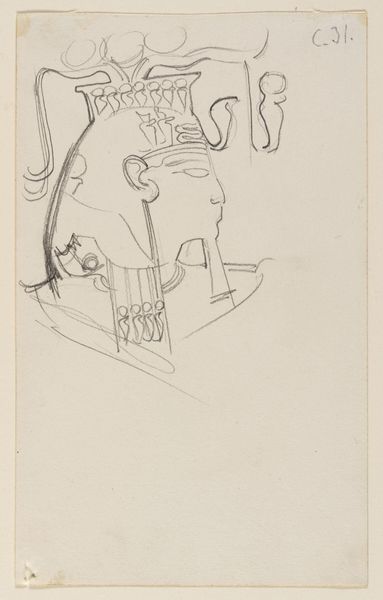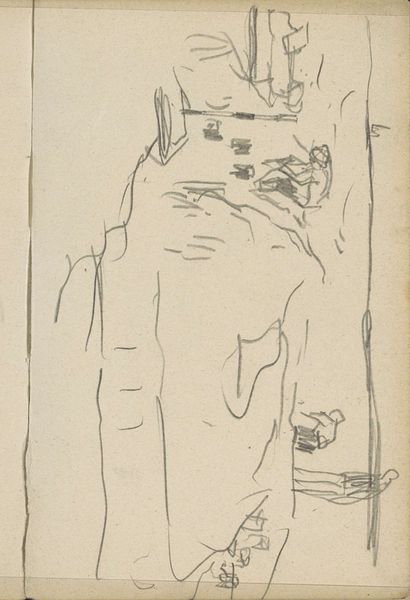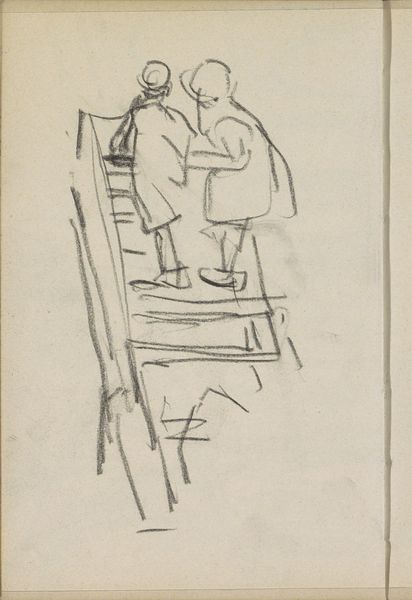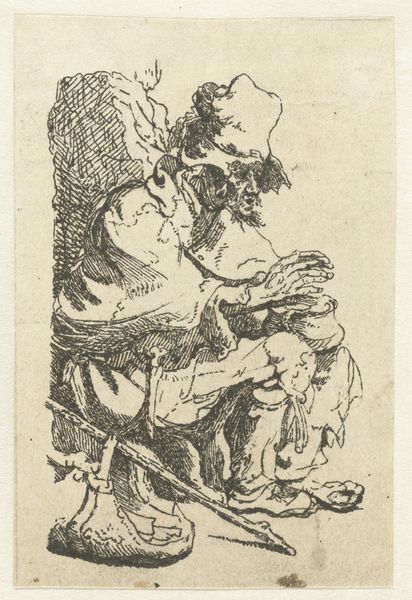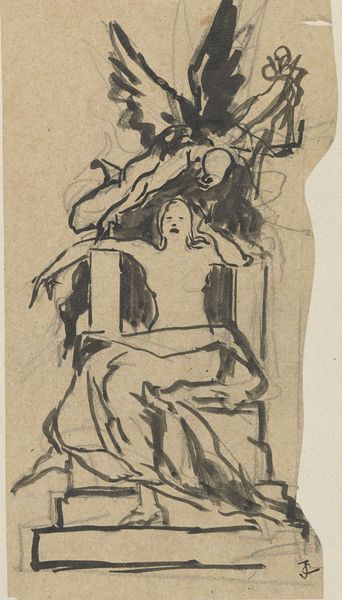
Copyright: Public Domain
Editor: This is "Frau Knopp redet ihrem Mann gut zu," or "Mrs. Knopp Talks Kindly to Her Husband," a pen and ink drawing by Wilhelm Busch, from 1876. The quick, sketchy lines give it an intimate, almost private feel. What’s your take on this piece? Curator: Let's consider the labor embedded in this drawing. Pen and ink, accessible materials even in 1876, democratize art-making. It wasn't about expensive oils; it was about direct engagement with everyday life, literally drawing from it. How does that immediacy speak to a burgeoning middle class with more leisure time? Editor: That makes sense! It's not some grand historical painting; it's a snippet of domestic life, quickly captured. Curator: Precisely. Busch, known for his illustrated stories, was participating in a form of mass production, even with a unique drawing like this. The reproduction of images and dissemination through printed materials—newspapers and books—affected what and how people consumed art. Consider too that this drawing and similar drawings also served as designs or sketches for wood engraving from which multiple prints could be made for publication. What’s being circulated in terms of ideas about society, about family? Editor: So, the 'artwork' isn't just the original drawing, but also potentially exists in copies. I am trying to look at this less as 'high art' and more a visual component to printed mass-produced media? Curator: Exactly! The original is almost just one step in a process. What kind of role do popular media play, then, in shaping perceptions, perpetuating stereotypes or social norms related to things such as gender roles, consumption and work at the time? It gets us away from idealizing Romanticism towards critiquing a whole consumer system. Editor: So much to consider beyond just the image itself! This focus on production and consumption gives me a much wider lens. Thanks! Curator: Agreed. By focusing on these drawings in their production cycle, and through the materials of pen, ink and cheap paper, we understand more deeply how popular culture emerged.
Comments
No comments
Be the first to comment and join the conversation on the ultimate creative platform.

